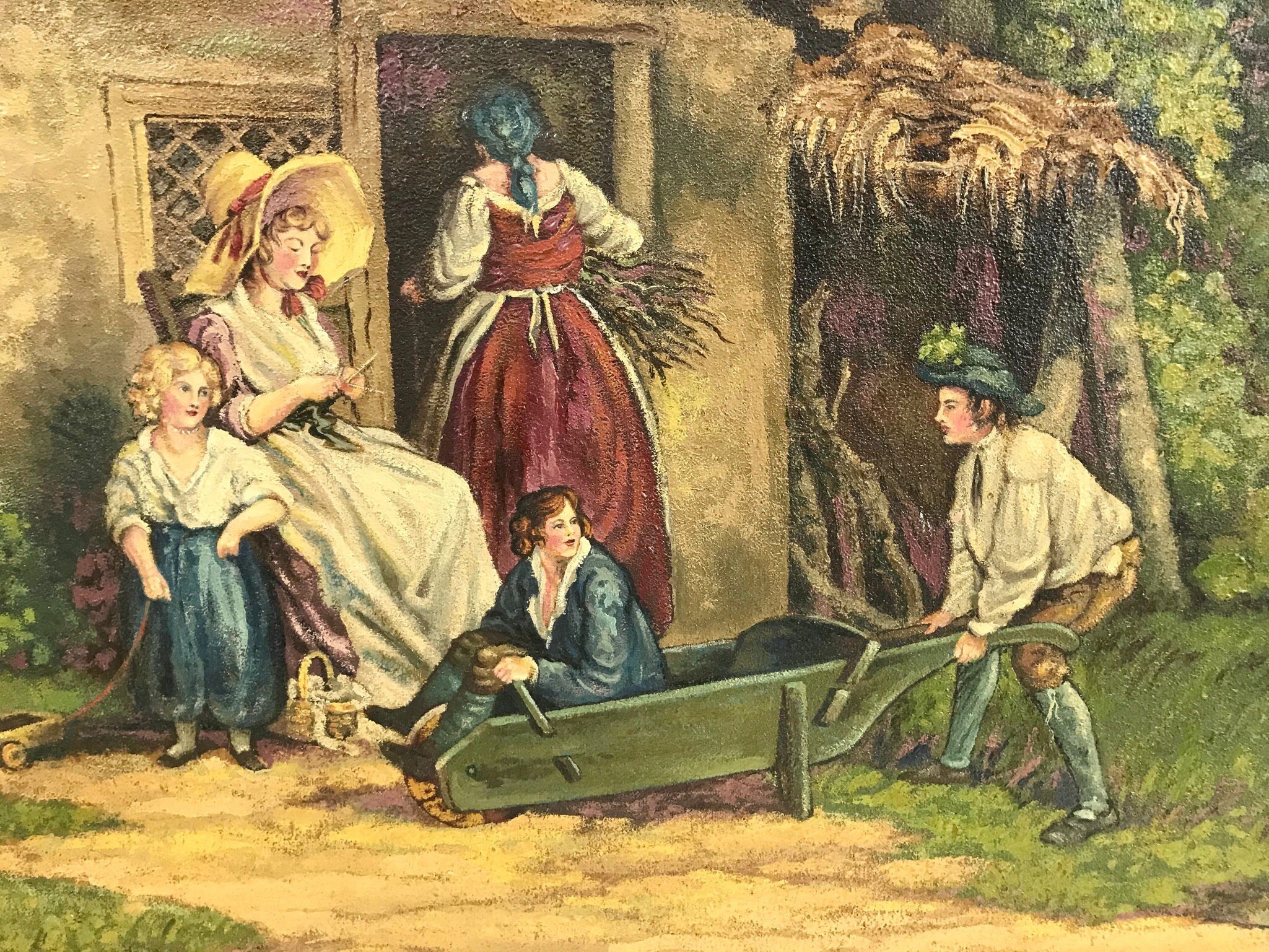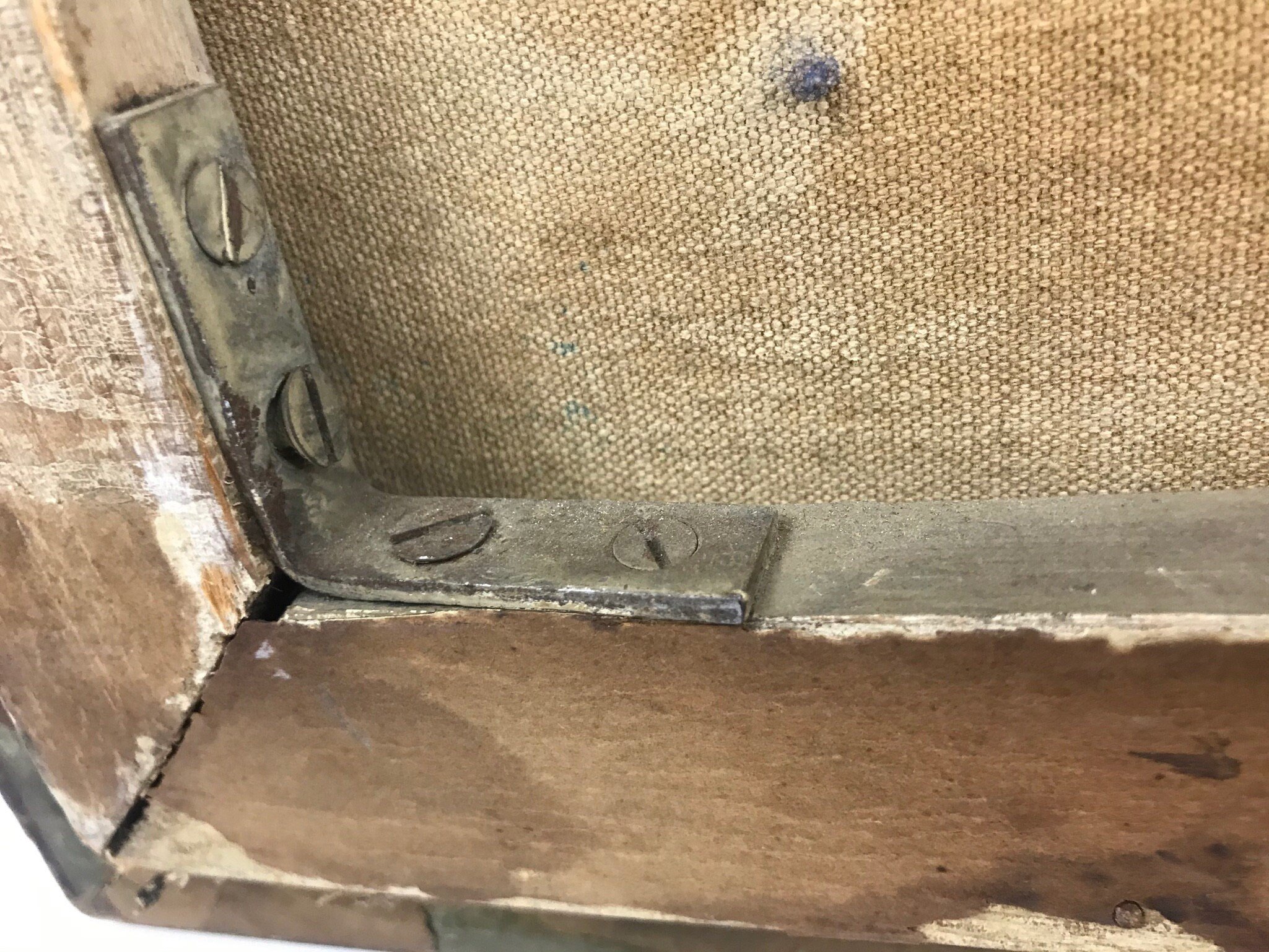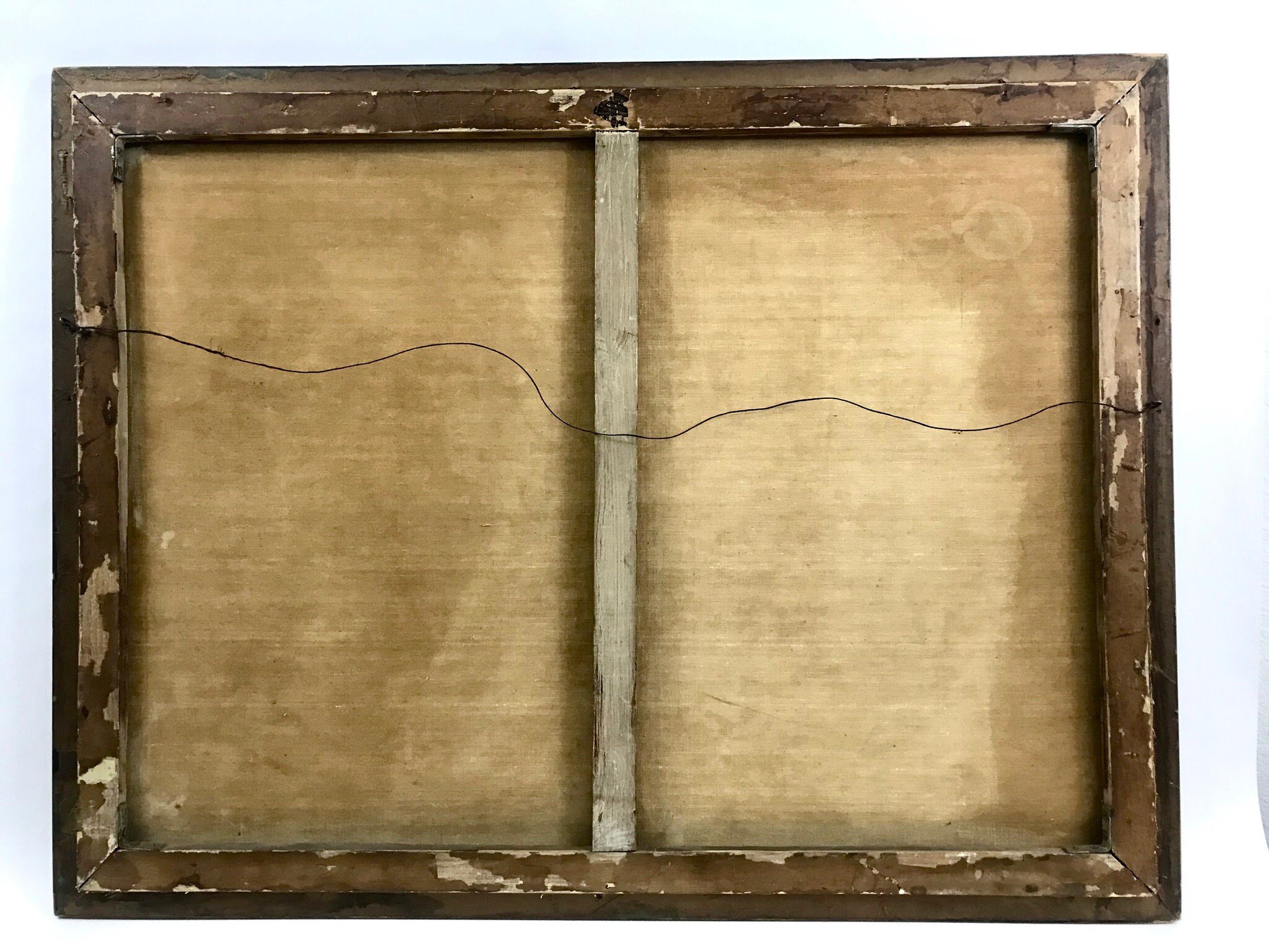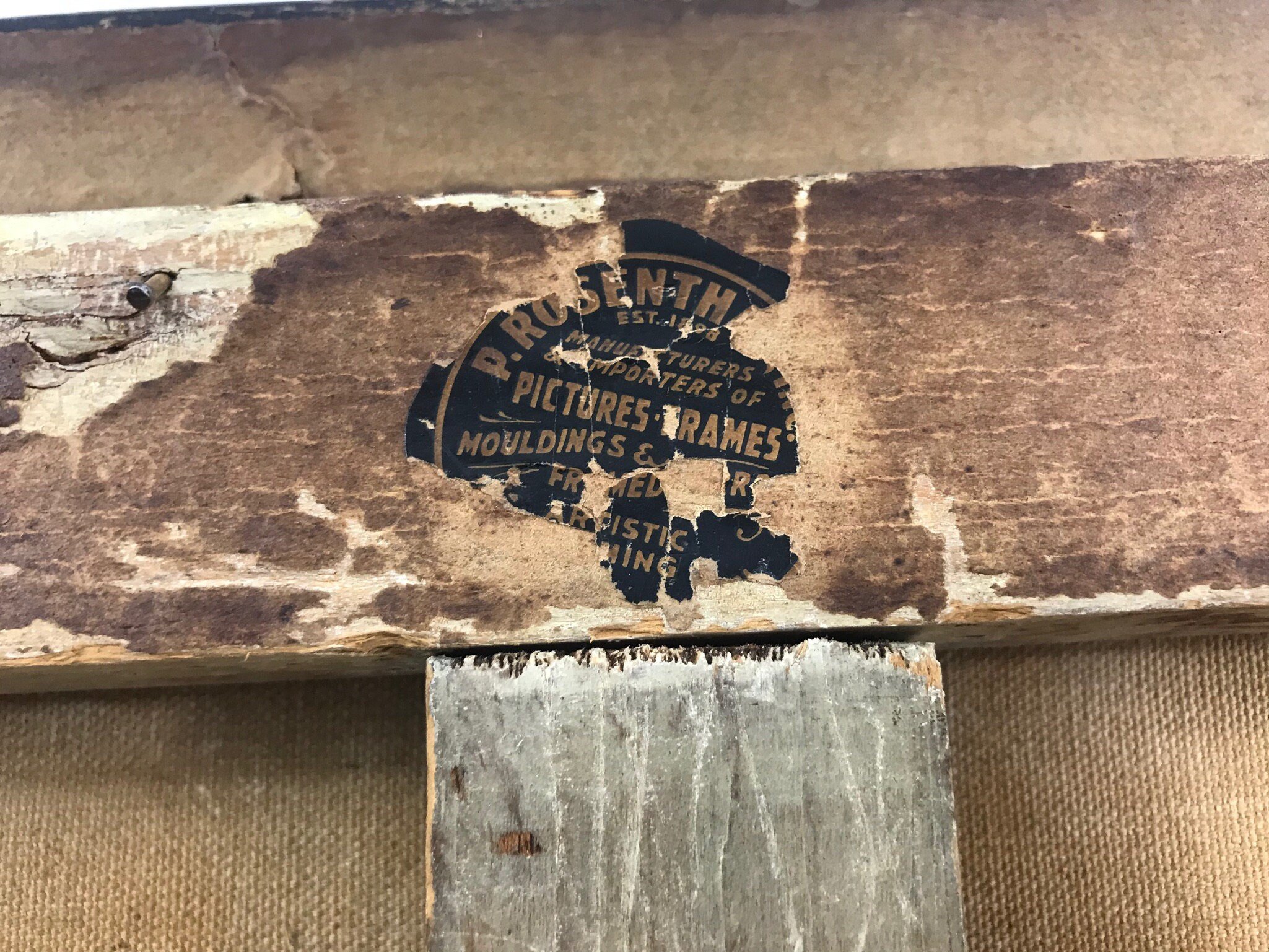GEORGE MORLAND (attributed to) (British, 1763-1804) - Happy Cottagers Painting










GEORGE MORLAND (attributed to) (British, 1763-1804) - Happy Cottagers Painting
$2,999.00
Title: "Happy Cottagers"
Original Antique Oil Painting that was attributed to one of George Morland's famous scenes - "Happy Cottagers", by William F Schuck.
An original Happy Cottagers was once on display in the Philadelphia Museum of Art, as well as the Bass Museum of Art, at Miami Beach.
This painting is signed in the lower right, George Morland, William F Schuck.
The frame measures: 32.5" h x 43" w
As you may notice, the back of the old frame is still has a partial sticker that is marked P. Rosenthal, Inc. This was a very old framing business from Philadelphia that served as manufacturers & importers of pictures & frames.
Condition: Very good overall condition. There is a light brush scrape near the mother goose and on the roof above the gentleman with the wheelbarrow. 4 fleabite specs on the upper left. View the photos for details.
BIOGRAPHY
George Morland (26 June 1763 in London – 29 October 1804 in Brighton) was an English painter. His early work was influenced by Francis Wheatley but after the 1790s he came into his own style. His best compositions focus on rustic scenes: farms and hunting; smugglers and gypsies; and rich, textured landscapes informed by Dutch Golden Age painting. From 1788 to 1792 inclusive, over a hundred engravings after Morland were published. They included 'A Visit to the Child at Home' and 'A Visit to the Boarding School,' two compositions of remarkable refinement and elegance, and a number of charming scenes of children's sports, like 'Children Birdnesting,' 'Juvenile Navigation,' 'The Kite entangled,' 'Blind Man's Buff,' and 'Children playing at Soldiers.' Equalling if not exceeding these in popularity were scenes of moral contrast, like 'The Fruits of early Industry and Economy' (1789) and 'The Effects of Extravagance and Idleness' (1794), the 'Miseries of Idleness' and the 'Comforts of Industry,' both published in 1790, and subjects appealing to national sentiments, like 'The Slave Trade' (1791) and 'African Hospitality.' Five hundred copies of the engraving of 'Dancing Dogs' (1790) were sold in a few weeks, and one dealer gave an order for nine dozen sets of the four plates of 'The Deserter' (1791). Elegant and refined subjects gradually gave place exclusively to scenes from humble life in town and country, including the coast with fishermen and smugglers, sporting scenes, but more frequently, in a plain but seldom a coarse manner, the life of the cottage, the stable, and the inn-yard, with lively groups of natural men and women, and still more natural horses, donkeys, dogs, pigs, poultry, and other animals. About 250 separate engravings from his works appeared in his lifetime. The finest of Morland's pictures were executed between 1790 and 1794, and amongst them, his picture The inside of a stable (Tate Britain, London) may be reckoned as a masterpiece. In the last eight years of his life, Morland produced some nine hundred paintings, besides over a thousand drawings. He exhibited regularly at the Royal Academy from 1784 down to 1804. Amongst these was the remarkable 1788 picture of Execrable Human Traffic or the Affectionate Slaves. Two years later he exhibited a companion picture showing Africans caring for shipwrecked Europeans. They were subsequently published as prints and served to promote abolitionism. Morland was a close friend of fellow artist, William Armfield Hobday (1771–1831) who painted a portrait of the artist which is still intact. William Collins was an informal pupil and later wrote a biography.
Original Antique Oil Painting that was attributed to one of George Morland's famous scenes - "Happy Cottagers", by William F Schuck.
An original Happy Cottagers was once on display in the Philadelphia Museum of Art, as well as the Bass Museum of Art, at Miami Beach.
This painting is signed in the lower right, George Morland, William F Schuck.
The frame measures: 32.5" h x 43" w
As you may notice, the back of the old frame is still has a partial sticker that is marked P. Rosenthal, Inc. This was a very old framing business from Philadelphia that served as manufacturers & importers of pictures & frames.
Condition: Very good overall condition. There is a light brush scrape near the mother goose and on the roof above the gentleman with the wheelbarrow. 4 fleabite specs on the upper left. View the photos for details.
BIOGRAPHY
George Morland (26 June 1763 in London – 29 October 1804 in Brighton) was an English painter. His early work was influenced by Francis Wheatley but after the 1790s he came into his own style. His best compositions focus on rustic scenes: farms and hunting; smugglers and gypsies; and rich, textured landscapes informed by Dutch Golden Age painting. From 1788 to 1792 inclusive, over a hundred engravings after Morland were published. They included 'A Visit to the Child at Home' and 'A Visit to the Boarding School,' two compositions of remarkable refinement and elegance, and a number of charming scenes of children's sports, like 'Children Birdnesting,' 'Juvenile Navigation,' 'The Kite entangled,' 'Blind Man's Buff,' and 'Children playing at Soldiers.' Equalling if not exceeding these in popularity were scenes of moral contrast, like 'The Fruits of early Industry and Economy' (1789) and 'The Effects of Extravagance and Idleness' (1794), the 'Miseries of Idleness' and the 'Comforts of Industry,' both published in 1790, and subjects appealing to national sentiments, like 'The Slave Trade' (1791) and 'African Hospitality.' Five hundred copies of the engraving of 'Dancing Dogs' (1790) were sold in a few weeks, and one dealer gave an order for nine dozen sets of the four plates of 'The Deserter' (1791). Elegant and refined subjects gradually gave place exclusively to scenes from humble life in town and country, including the coast with fishermen and smugglers, sporting scenes, but more frequently, in a plain but seldom a coarse manner, the life of the cottage, the stable, and the inn-yard, with lively groups of natural men and women, and still more natural horses, donkeys, dogs, pigs, poultry, and other animals. About 250 separate engravings from his works appeared in his lifetime. The finest of Morland's pictures were executed between 1790 and 1794, and amongst them, his picture The inside of a stable (Tate Britain, London) may be reckoned as a masterpiece. In the last eight years of his life, Morland produced some nine hundred paintings, besides over a thousand drawings. He exhibited regularly at the Royal Academy from 1784 down to 1804. Amongst these was the remarkable 1788 picture of Execrable Human Traffic or the Affectionate Slaves. Two years later he exhibited a companion picture showing Africans caring for shipwrecked Europeans. They were subsequently published as prints and served to promote abolitionism. Morland was a close friend of fellow artist, William Armfield Hobday (1771–1831) who painted a portrait of the artist which is still intact. William Collins was an informal pupil and later wrote a biography.
